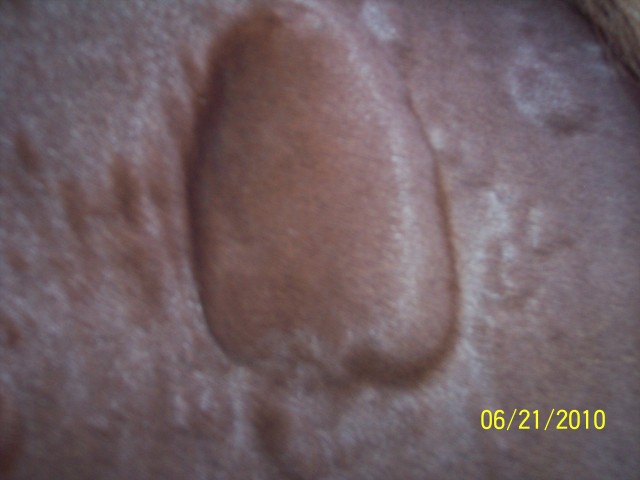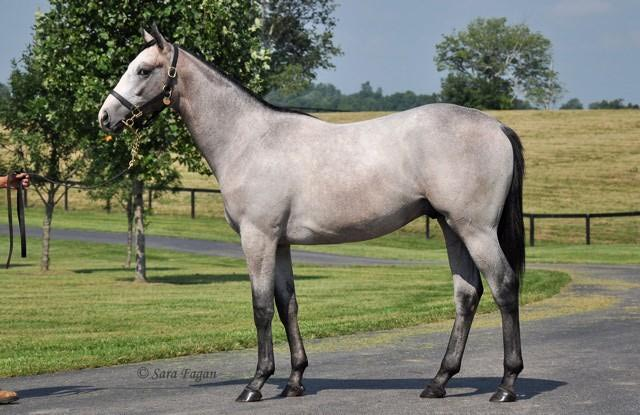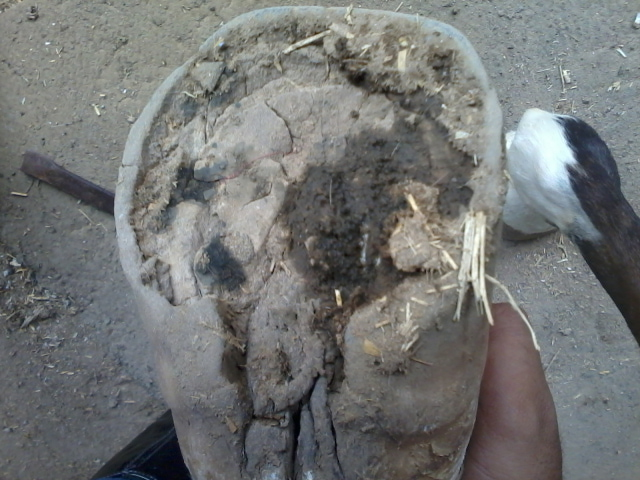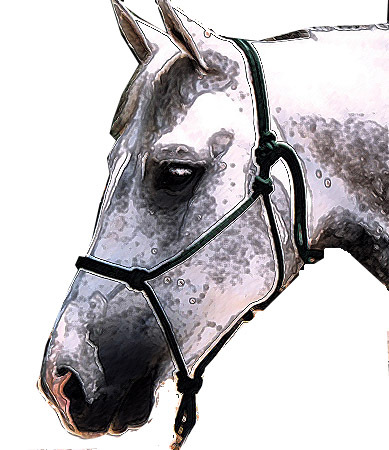QuestionMy horse had a mild case of laminitis June 7, 09. Per xray she only had a slight rotation of front right. After her recovery period, she is now on pasture with a grazing muzzle for approx 10 to 12 hours a day. She is getting all the hay (Coastal Bermuda) that she will eat at night while stalled (I board and have no control over this). I have begun to study natural feed in lieu of putting her back on processed horse feed. What are your thoughts on what a horse would need nutrionally that would not include any unneeded sugars? x4vso
AnswerDebbie,
Unless she is underweight I wouldn't bother with any grain right now. I don't know a lot about Coastal hay; my sister in FL has a very low opinion of it. I did get a few bales when I was in NC years ago that looked like nice hay but neither of our horses was real impressed with it. Unless you get a sample analyzed I really don't have a good idea of nutritional value of it as far as micronutrients and vitamins. In any hay, that depends a great deal upon the growing conditions that year and what stage the grass was at when it was cut.
A lot of people will say that horses that are in maintenance or light work will do just fine on grass/hay, salt, water and plain oats. So much depends upon the nutrient value of the grass/hay components that I do supplement with a general product like Source. It now comes in a pelleted form that's easier to get some horses to eat with something like plain oats. If she needs some extra feed because she's not maintaining her weight or she's being ridden with any degree of frequency then look into low starch/high fiber feeds. There are several out there. I like the Pennfield Fibergized because it's low starch/high fiber/high fat feed. I know that Blue Seal has a product out, my friend uses it for their horses, but I don't know the name. Nutrena also has a similar feed. She probably doesn't need the high fat component. I use it because I'm feeding horses that work and live on dry, sandy lots most of the time. The pasture is limited (grass doesn't grow well in this part of NJ) so they need the calories. A number of them are aged, 25,24,20, 17, 16 and they are all doing well on this. It's designed for performance horses so has lots of good stuff added to it, like probiotic bacteria to help gut function, electrolytes, etc. These feeds are all beet pulp based. Beet pulp is a very good forage, well digested by the horse, so the feeds are designed for what the equine gut evolved processing - fiber. They will contain a small amount of molasses, but with an overall carb content of under 10% it's not enough to cause a problem. It's done for palatability plus as a source of iron.
I hope you are aware that it will take about a year for her foot to fully heal. I had a mare with a 2 deg. rotation in one hoof, 1.5 in the other when I first x-rayed her feet. It took 2 years of corrective trimming and hoof maintenance to get her feet back to normal. She did distance trail rides during this time. I had just purchased this mare and she was grossly overweight and although her feet visually showed no evidence of founder, my farrier saw it when he trimmed her feet and then I had her x-rayed. You need to keep x-raying the feet, about every 3 mos. to monitor how they are progressing in returning the coffin bone to it's proper position. Put bar shoes on her to give her support and give her some regular exercise to promote circulation in her feet and promote healing. I also had to start supplementing her with thyroid because that was why she was so overweight, her thyroid levels were low.
Take care of her now and she'll be fine. You don't say how old she is but you may want to have her checked for Cushing's. The diet I've suggested is perfect for a horse with Cushing's or is insulin resistant. Good luck!!
Lyn

 Bumps all over my horse
Question
under mane
I just went down to pasture to chec
Bumps all over my horse
Question
under mane
I just went down to pasture to chec
 leg bandages on fore legs
Question
leg bandages
hello maam. this is an ima
leg bandages on fore legs
Question
leg bandages
hello maam. this is an ima
 Kaves Ankle Injury
QuestionQUESTION: Hi Anne,
Yes I did hear back from Dr
Kaves Ankle Injury
QuestionQUESTION: Hi Anne,
Yes I did hear back from Dr
 thrush on hoof
Question
thrush
hello. hope you can answer this
thrush on hoof
Question
thrush
hello. hope you can answer this
 training an older arabian
QuestionHi i have an 8 year old arabian who has been un
training an older arabian
QuestionHi i have an 8 year old arabian who has been un